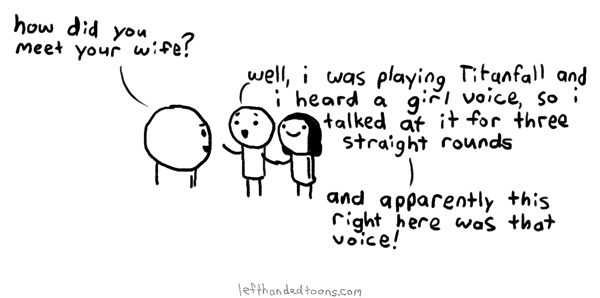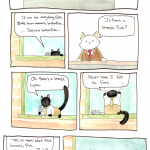“…Science, accumulated and reviewed over decades, tells us that our planet is changing in ways that will have profound impacts on all of humankind…those who are already feeling the effects of climate change don’t have time to deny it—they’re busy dealing with it.”
-- President Barack Obama, Remarks at Georgetown University, June 25, 2013.
Today, delivering on a major commitment in the President’s Climate Action Plan, the Obama Administration is unveiling the third U.S. National Climate Assessment—the most comprehensive scientific assessment ever generated of climate change and its impacts across every region of America and major sectors of the U.S. economy.
The findings in this National Climate Assessment underscore the need for urgent action to combat the threats from climate change, protect American citizens and communities today, and build a sustainable future for our kids and grandkids.
Developed over four years by hundreds of the Nation’s top climate scientists and technical experts—and informed by thousands of inputs from the public and outside organizations gathered through town hall meetings, public-comment opportunities, and technical workshops across the country, the third National Climate Assessment represents the most authoritative and comprehensive knowledge base about how climate change is affecting America now, and what’s likely to come over the next century.
And, for the first time, to ensure that American citizens, communities, businesses, and decision makers have easy access to scientific information about climate change impacts that are most relevant to them, the U.S. National Climate Assessment is being released in an interactive, mobile-device-friendly, digital format on www.globalchange.gov.
Today’s announcement is a key deliverable of the Climate Action Plan launched by President Obama last June—which lays out concrete steps to cut carbon pollution, prepare America’s communities for climate-change impacts, and lead international efforts to address this global challenge. The Plan acknowledges that even as we act to reduce the greenhouse-gas pollution that is driving climate change, we must also empower the Nation’s communities, businesses, and individual citizens with the information they need to cope with the changes in climate that are already underway.
Climate-Change Impacts in Regions across America:
• Northeast – Maine, New Hampshire, Vermont, Massachusetts, Rhode Island, Connecticut, New York, New Jersey, Delaware, Pennsylvania, Maryland, and District of Columbia: “Sixty-four million people are concentrated in the Northeast. The high-density urban coastal corridor from Washington, DC, north to Boston is one of the most developed environments in the world, containing a massive, complex, and long-standing network of supporting infrastructure. The Northeast also has a vital rural component.” Communities in the Northeast “are affected by heat waves, more extreme precipitation events, and coastal flooding due to sea level rise and storm surge.” (NCA Highlights: Northeast; NCA Highlights: Overview)
• Southeast and Caribbean –Virginia, W. Virginia, Kentucky, Tennessee, Georgia, Alabama, Arkansas, S. Carolina, N. Carolina, Mississippi, Florida, Louisiana, and the Caribbean Islands: The Southeast and Caribbean region “is home to more than 80 million people and some of the fastest-growing metropolitan areas… The Gulf and Atlantic coasts are major producers of seafood and home to seven major ports that are also vulnerable. The Southeast is a major energy producer of coal, crude oil, and natural gas.” “Decreased water availability, exacerbated by population growth and land-use change, causes increased competition for water in this region. There are also increased risks associated with extreme events such as hurricanes.” (NCA Highlights: Southeast & Caribbean; NCA Highlights: Overview)
• Midwest – Minnesota, Michigan, Iowa, Indiana, Ohio, Missouri, Illinois, and Wisconsin: “The Midwest’s agricultural lands, forests, Great Lakes, industrial activities, and cities are all vulnerable to climate variability and climate change.” “Longer growing seasons and rising carbon dioxide levels increase yields of some crops, although these benefits have already been offset in some instances by occurrence of extreme events such as heat waves, droughts, and floods.” (NCA Highlights: Midwest; NCA Highlights: Overview
• Great Plains – Wyoming, N. Dakota, S. Dakota, Montana, Nebraska, Kansas, Oklahoma, and Texas: The Great Plains region “experiences multiple climate and weather hazards, including floods, droughts, severe storms, tornadoes, hurricanes, and winter storms. In much of the Great Plains, too little precipitation falls to replace that needed by humans, plants, and animals. These variable conditions already stress communities and cause billions of dollars in damage. Climate change will add to both stress and costs.” “Rising temperatures lead to increased demand for water and energy and impacts on agricultural practices.” (NCA Highlights: Great Plains; NCA Highlights: Overview)
• Southwest – California, Nevada, Arizona, New Mexico, Utah, and Colorado: “The Southwest is the hottest and driest region in the United States. Climate changes pose challenges for an already parched region that is expected to get hotter and, in its southern half, significantly drier. Increased heat and changes to rain and snowpack will send ripple effects throughout the region… and its critical agriculture sector.” “Drought and increased warming foster wildfires and increased competition for scarce water resources for people and ecosystems.” (NCA Highlights: Southwest; NCA Highlights: Overview)
• Northwest – Idaho, Oregon, and Washington: “The Northwest’s economy, infrastructure, natural systems, public health, and agriculture sectors all face important climate change related risks. Impacts on infrastructure, natural systems, human health, and economic sectors, combined with issues of social and ecological vulnerability, will unfold quite differently in largely natural areas, like the Cascade Range, than in urban areas like Seattle and Portland or among the region’s many Native American Tribes.” “Changes in the timing of streamflow related to earlier snowmelt reduce the supply of water in summer, causing far-reaching ecological and socioeconomic consequences.” (NCA Highlights: Northwest; NCA Highlights: Overview)
• Alaska: “Over the past 60 years, Alaska has warmed more than twice as rapidly as the rest of the United States…The state’s largest industries, energy production, mining, and fishing—are all affected by climate change.” “Rapidly receding summer sea ice, shrinking glaciers, and thawing permafrost cause damage to infrastructure and major changes to ecosystems. Impacts on Alaska Native communities increase.” (NCA Highlights: Alaska; NCA Highlights: Overview)
• Hawaii and Pacific Islands: The U.S. Pacific Islands region “includes more than 2,000 islands spanning millions of square miles of ocean. Rising air and ocean temperatures, shifting rainfall patterns, changing frequencies and intensities of storms and drought, decreasing streamflows, rising sea levels, and changing ocean chemistry will threaten the sustainability of globally important and diverse ecosystems…as well as local communities, livelihoods, and cultures.” “Increasingly constrained freshwater supplies, coupled with increased temperatures, stress both people and ecosystems and decrease food and water security.” (NCA Highlights: Hawaii and the Pacific Islands; NCA Highlights: Overview)
• Coasts: “More than 50% of Americans – 164 million people – live in coastal counties, with 1.2 million added each year... Humans have heavily altered the coastal environment through development, changes in land use, and overexploitation of resources. Now, the changing climate is imposing additional stresses...” “Coastal lifelines, such as water supply infrastructure and evacuation routes are increasingly vulnerable to higher sea levels and storm surges, inland flooding, and other climate-related changes.” (NCA Highlights: Coasts; NCA Highlights: Overview)
Climate-Change Impacts on Key Sectors of Society and the U.S. Economy
• Health: “Climate change threatens human health and well-being in many ways, including through impacts from increased extreme weather events, wildfire, decreased air quality, threats to mental health, and illnesses transmitted by food, water, and disease carriers such as mosquitoes and ticks. Some of these health impacts are already underway in the United States. Climate change will, absent other changes, amplify some of the existing health threats the Nation now faces. Certain people and communities are especially vulnerable, including children, the elderly, the sick, the poor, and some communities of color. Public health actions, especially preparedness and prevention, can do much to protect people from some of the impacts of climate change. Early action provides the largest health benefits.” (NCA Highlights: Human Health)
• Transportation: “The impacts from sea level rise and storm surge, extreme weather events, higher temperatures and heat waves, precipitation changes, Arctic warming, and other climatic conditions are affecting the reliability and capacity of the U.S. transportation system in many ways. Sea level rise, coupled with storm surge, will continue to increase the risk of major coastal impacts on transportation infrastructure, including both temporary and permanent flooding of airports, ports and harbors, roads, rail lines, tunnels, and bridges. Extreme weather events currently disrupt transportation networks in all areas of the country; projections indicate that such disruptions will increase. Climate change impacts will increase the total costs to the Nation’s transportation systems and their users, but these impacts can be reduced through rerouting, mode change, and a wide range of adaptive actions.” (NCA Highlights: Transportation)
• Energy: “Extreme weather events are affecting energy production and delivery facilities, causing supply disruptions of varying lengths and magnitudes and affecting other infrastructure that depends on energy supply. The frequency and intensity of certain types of extreme weather events are expected to change. Higher summer temperatures will increase electricity use, causing higher summer peak loads, while warmer winters will decrease energy demands for heating. Net electricity use is projected to increase. Changes in water availability, both episodic and long-lasting, will constrain different forms of energy production. In the longer term, sea level rise, extreme storm surge events, and high tides will affect coastal facilities and infrastructure on which many energy systems, markets, and consumers depend. As new investments in energy technologies occur, future energy systems will differ from today’s in uncertain ways. Depending on the character of changes in the energy mix, climate change will introduce new risks as well as new opportunities.” (NCA Highlights: Energy Supply and Use)
• Water: “Climate change affects water demand and the ways water is used within and across regions and economic sectors. The Southwest, Great Plains, and Southeast are particularly vulnerable to changes in water supply and demand. Changes in precipitation and runoff, combined with changes in consumption and withdrawal, have reduced surface and groundwater supplies in many areas. These trends are expected to continue, increasing the likelihood of water shortages for many uses. Increasing flooding risk affects human safety and health, property, infrastructure, economies, and ecology in many basins across the United States… Increasing resilience and enhancing adaptive capacity provide opportunities to strengthen water resources management and plan for climate-change impacts.” (NCA Highlights: Water)
• Agriculture: “Climate disruptions to agriculture have been increasing and are projected to become more severe over this century. Some areas are already experiencing climate-related disruptions, particularly due to extreme weather events. While some U.S. regions and some types of agricultural production will be relatively resilient to climate change over the next 25 years or so, others will increasingly suffer from stresses due to extreme heat, drought, disease, and heavy downpours. From mid-century on, climate change is projected to have more negative impacts on crops and livestock across the country – a trend that could diminish the security of our food supply… Climate change effects on agriculture will have consequences for food security, both in the U.S. and globally, through changes in crop yields and food prices and effects on food processing, storage, transportation, and retailing. Adaptation measures can help delay and reduce some of these impacts.” (NCA Highlights: Agriculture)
• Ecosystems: “Ecosystems and the benefits they provide to society are being affected by climate change. The capacity of ecosystems to buffer the impacts of extreme events like fires, floods, and severe storms is being overwhelmed. Climate change impacts on biodiversity are already being observed in alteration of the timing of critical biological events such as spring bud burst, and substantial range shifts of many species. In the longer term, there is an increased risk of species extinction. Events such as droughts, floods, wildfires, and pest outbreaks associated with climate change (for example, bark beetles in the West) are already disrupting ecosystems. These changes limit the capacity of ecosystems, such as forests, barrier beaches, and wetlands, to continue to play important roles in reducing the impacts of extreme events on infrastructure, human communities, and other valued resources… Whole-system management is often more effective than focusing on one species at a time, and can help reduce the harm to wildlife, natural assets, and human well-being that climate disruption might cause.” (NCA Highlights: Ecosystems)
• Oceans: “Ocean waters are becoming warmer and more acidic, broadly affecting ocean circulation, chemistry, ecosystems, and marine life. More acidic waters inhibit the formation of shells, skeletons, and coral reefs. Warmer waters harm coral reefs and alter the distribution, abundance, and productivity of many marine species. The rising temperature and changing chemistry of ocean water combine with other stresses, such as overfishing and coastal and marine pollution, to alter marine-based food production and harm fishing communities… In response to observed and projected climate impacts, some existing ocean policies, practices, and management efforts are incorporating climate change impacts. These initiatives can serve as models for other efforts and ultimately enable people and communities to adapt to changing ocean conditions.” (NCA Highlights: Oceans)
Climate Trends in America
• Temperature: “U.S. average temperature has increased by 1.3°F to 1.9°F since record keeping began in 1895; most of this increase has occurred since about 1970. The most recent decade was the Nation’s warmest on record. Temperatures in the United States are expected to continue to rise. Because human-induced warming is superimposed on a naturally varying climate, the temperature rise has not been, and will not be, uniform or smooth across the country or over time.” (NCA Highlights: Climate Trends)
• Extreme Weather: “There have been changes in some types of extreme weather events over the last several decades. Heat waves have become more frequent and intense, especially in the West. Cold waves have become less frequent and intense across the Nation. There have been regional trends in floods and droughts. Droughts in the Southwest and heat waves everywhere are projected to become more intense, and cold waves less intense everywhere.” (NCA Highlights: Climate Trends)
• Hurricanes: “The intensity, frequency, and duration of North Atlantic hurricanes, as well as the frequency of the strongest (Category 4 and 5) hurricanes, have all increased since the early 1980s. The relative contributions of human and natural causes to these increases are still uncertain. Hurricane-associated storm intensity and rainfall rates are projected to increase as the climate continues to warm.” (NCA Highlights: Climate Trends)
• Severe Storms: “Winter storms have increased in frequency and intensity since the 1950s, and their tracks have shifted northward over the United States. Other trends in severe storms, including the intensity and frequency of tornadoes, hail, and damaging thunderstorm winds, are uncertain and are being studied intensively.” (NCA Highlights: Climate Trends)
• Precipitation: “Average U.S. precipitation has increased since 1900, but some areas have had increases greater than the national average, and some areas have had decreases. More winter and spring precipitation is projected for the northern United States, and less for the Southwest, over this century.” (NCA Highlights: Climate Trends)
• Heavy Downpours: “Heavy downpours are increasing nationally, especially over the last three to five decades. Largest increases are in the Midwest and Northeast. Increases in the frequency and intensity of extreme precipitation events are projected for all U.S. regions.” (NCA Highlights: Climate Trends)
• Frost-free Season: “The length of the frost-free season (and the corresponding growing season) has been increasing nationally since the 1980s, with the largest increases occurring in the western United States, affecting ecosystems and agriculture. Across the United States, the growing season is projected to continue to lengthen.” (NCA Highlights: Climate Trends)
• Ice Melt: “Rising temperatures are reducing ice volume and surface extent on land, lakes, and sea. This loss of ice is expected to continue. The Arctic Ocean is expected to become essentially ice free in summer before mid-century.” (NCA Highlights: Climate Trends)
• Sea Level: “Global sea level has risen by about 8 inches since reliable record keeping began in 1880. It is projected to rise another 1 to 4 feet by 2100.” (NCA Highlights: Climate Trends)
• Ocean Acidification: “The oceans are currently absorbing about a quarter of the carbon dioxide emitted to the atmosphere annually and are becoming more acidic as a result, leading to concerns about intensifying impacts on marine ecosystems.” (NCA Highlights: Climate Trends)
 Her Smoke Rose Up Forever, James Tiptree Jr (1990)
Her Smoke Rose Up Forever, James Tiptree Jr (1990)
 Image: Je ne crois pas aux paysages by
Image: Je ne crois pas aux paysages by 


























